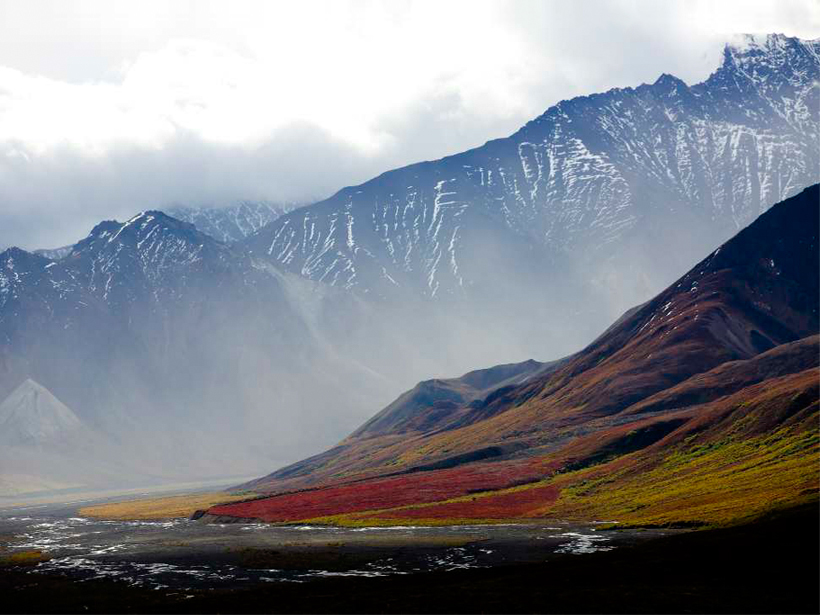Source: Journal of Geophysical Research: Biogeosciences
The Arctic tundra is a natural carbon sink. As temperatures continue to rise around the globe, more vegetation will spring up in the frigid region, potentially pulling even more carbon dioxide from the atmosphere due to increased plant productivity.
However, the warming carries other consequences, too. Even though carbon uptake during the growing season increased in recent years, observations show annual net losses of carbon to the atmosphere—as Arctic soils thaw, a vast reservoir of carbon locked up in the permafrost can be released to the atmosphere as greenhouse gases. Continued releases could shift the region from a carbon sink to a source by the end of this century.

Previous research has shown that soil moisture plays a critical part in both permafrost thaw and carbon exchange with the atmosphere—as the permafrost breaks down, surface water may drain away to deeper soil layers, leaving the topsoil high and dry. However, this kind of soil drying is often overlooked in research on the impacts of thawing permafrost.
Recognizing this oversight, Natali et al. took a first look at how thawing permafrost and soil moisture dynamics combined will affect carbon in the Arctic tundra. The team documented carbon dioxide exchange during 3 years of growing seasons in an upland tundra ecosystem in the northern foothills of the Alaska Range.
Critically, the research team manipulated some plots to experimentally induce warming and drying. They simulated winter warming by insulating vegetation with increased snowpack and summer warming by covering plants with open-topped greenhouses. They also manipulated water table levels with an automated pumping system. The team then measured the effects of their changes on fluxes of both carbon dioxide and methane.
The warming treatment increased ground thaw by approximately 15% compared to controls and caused an increase in carbon dioxide released from plant and microbial respiration. The authors found that, together, warming and drying increased ecosystem respiration by 20% over the 3-year experiment, the same amount that warming and drying increased respiration individually. The results indicate that temperature and moisture levels may disparately affect carbon release from plants and microbes within the plots when they work in concert.
In addition, the amount of decomposition in the top 10 centimeters of soil was nearly 2 times greater in the warming condition and in the dry condition compared with controls. The study also detected methane emissions—which can have a much larger impact on global warming than carbon dioxide—across all plots, even controls, but emissions were highest for the warmed plots. (Journal of Geophysical Research: Biogeosciences, doi:10.1002/2014JG002872, 2015)
—Kate Wheeling, Freelance Writer
Citation: Wheeling, K. (2015), Simulating a warmer, drier Arctic, Eos, 96, doi:10.1029/2015EO033087. Published on 27 July 2015.
Text © 2015. The authors. CC BY-NC 3.0
Except where otherwise noted, images are subject to copyright. Any reuse without express permission from the copyright owner is prohibited.

